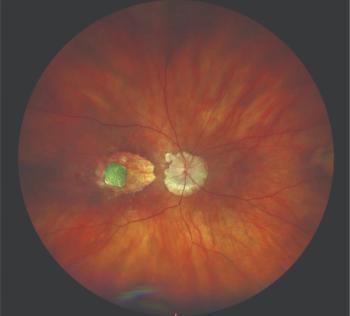
AAO 2023: Study finds children diagnosed with sickle cell disease seem to suffer eye issues at same rate as adult patients
According to data presented at the American Academy of Ophthalmology annual meeting in San Francisco, a study of children with cell disease finds 1 in 3 had retinopathy.
Sickle cell disease is a rare, inherited disorder in which the red blood cells become hard, sticky, and change shape, resembling the farm tool. People diagnosed with the disease can sometimes develop vision problems when these sickle-shaped cells get trapped in the small blood vessels as the back of the eye.
According to an American Academy of Ophthalmology (AAO) news release, sickle retinopathy is an age-dependent process, with older people being at substantially higher risk, than younger patients. To learn more about how this condition manifests in children, researchers at the University of Tennessee Health Science Center conducted a large, retrospective review at their institution. What they found surprised them.
The researchers found that 1 in 3 children had retinopathy, of which 9 percent required treatment, suggesting children need to be screened for vision problems as often as adults with sickle cell disease. The research was presented today at the 127th AAO annual meeting, being held in San Francisco.
“Our data underscores the need for patients— including pediatric patients— with sickle cell disease to get routine ophthalmic screenings along with appropriate systemic and ophthalmic treatment,” lead researcher, Mary Ellen Hoehn, MD, professor of Ophthalmology at University of Tennessee Health Science Center, said in the news release.
Moreover, Hoehn and the researchers examined the effectiveness of different therapies for sickle cell disease. They found that hydroxyurea and chronic transfusions were associated with decreased rates of retinopathy, even when accounting for different genotypes.
To conduct the study, the researchers examined the records for 652 patients, aged 10 to 25 years (median age: 14) who underwent eye exams (2,240 visits) over a 12-year period. They found:
- 33 percent had nonproliferative retinopathy.
- 6 percent had proliferative retinopathy.
- 33 eyes were treated with panretinal photocoagulation, most commonly for PR stage 3 (43 percent). Intravitreal anti-VEGF therapy was given to five eyes, all with PR.
- Other complications included retinal detachment and retinal artery occlusion in two patients each.
- Vision loss (final best corrected visual acuity 20/60) following complications from sickle cell disease was noted in only one patient with a central retinal artery occlusion.
Hoehn lauded the data, which could lead to earlier diagnosis and better outcomes for patients.
“We hope that people will use this information to better care for patients with sickle cell disease, and that more timely ophthalmic screen exams will be performed so that vision-threatening complications from this disease are prevented,” Hoehn concluded in the news release.
Newsletter
Don’t miss out—get Ophthalmology Times updates on the latest clinical advancements and expert interviews, straight to your inbox.





